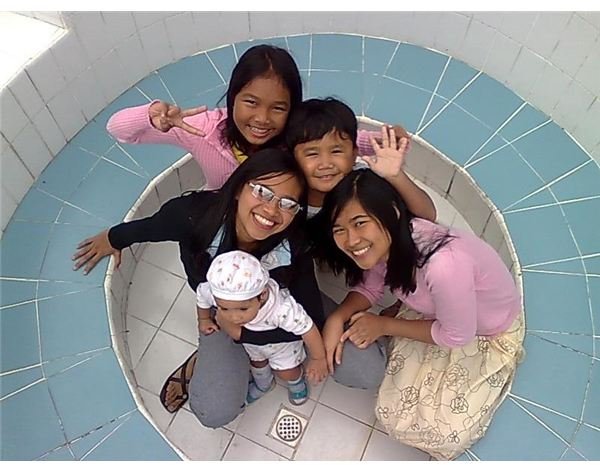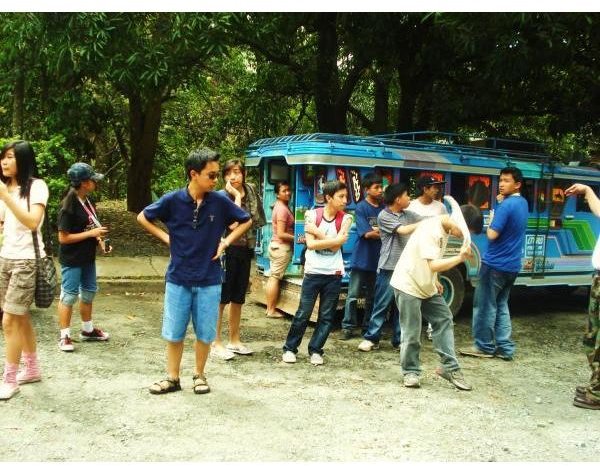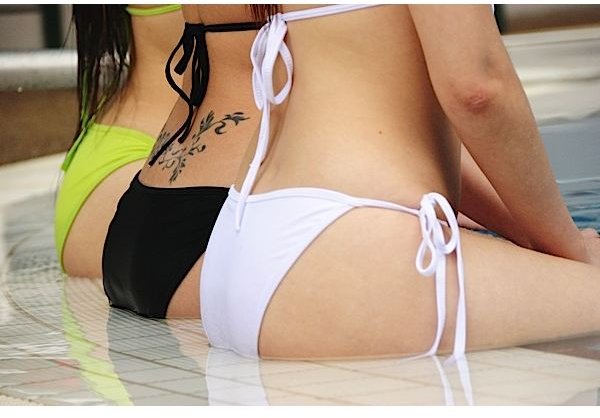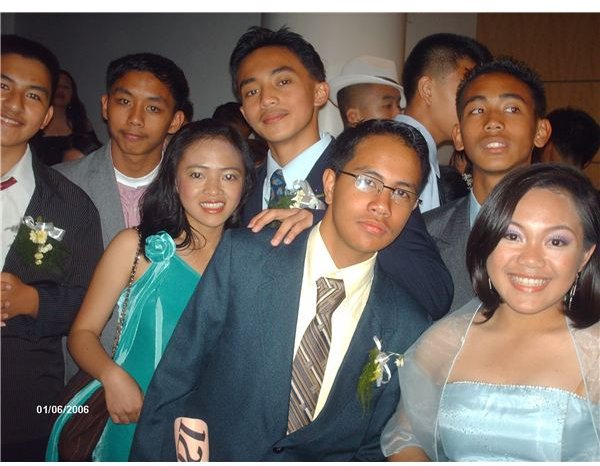People Photography - Tips & Tricks on Taking Pictures of People
Taking photographs of people
People are one of the most difficult subjects to photograph. People have different emotions and personalities which make them interesting to capture. And yet, in many cases, photographs of people are usually unfocused and do not provide a clue as to why the photo was taken in the first place.
I understand that not everyone is interested in photography. Besides, photography is also a broad field and becoming a pro would take a lot of time and effort. But by learning the basics such as the general settings for taking portraits or tightening your composition, things which take only a few minutes to learn, can have a really powerful effect on your photos.
When we talk about photographing people, the first image that comes to mind is that of a smiling face. There’s really nothing wrong with this kind of portraiture but you can add a little creativity to make your photo more interesting and memorable. Most people just want to take simple photographs - you know, people smiling, posed in front of a building or a landmark – images which might not sell at an art gallery. And yet, these memorable moments, when captured with greater eye for detail can become a work of art you will be proud to display in your own home.
The ways you can photograph people falls into three categories: portraiture, candid and glamour. Each type of photography has its own requirements and considerations and differs on the feeling that each image hopes to convey.
Portraiture: The informal portrait

There are two types of portrait photography: the formal portrait and the informal portrait. Formal portraits are usually taken in a studio (such a yearbook photos) and are usually undertaken by professionals. On the other hand, informal portraits are taken spontaneously. These are the kinds of photos you take when you’re out with your friends, or when you want to capture a memorable event. In informal portraiture, you usually combine the person and the location to create a memory shot.
Because it is usually done by amateurs, many informal portraits have terrible results. People cannot decide which part of the scene they want to show and end up showing everything, which then results in an image showing nothing.
Perhaps you’re familiar with this process – you ask your subject to stand in front of a tourist attraction, you ask them to smile and “click!” If you take photos this way, then there’s a chance that you will forget who that person is and why you took his/her photo in the first place. This process defeats the purpose of photography – to share the same emotions and memories to a person who wasn’t there.
When you’re taking an informal portrait, only two things are important: your subject’s face and the background scenery. Here are a couple of tips to keep in mind when taking informal portraits of people:
1. Balance the light. Determine which element of the composition and do your best to help the other element get lighter. If your subject is not getting enough light, then you might want to turn on your flash. If your subject is brightly lit in the background, you can either reposition him/her or use fill flash.
2. Choose the right lens. A wide angle lens can distort your images while a short zoom lens (85mm to 100mm) will let you shoot from a good working distance. This has a lot of advantages: there is little or no distortion and you give your subject breathing space. Also, with a zoom lens, you can get a variety of shots easily since you don’t have to move to get tighter head shots.
3. Depth of field. According to many experts, the best aperture for portraits is f/11 since it provides sharper images and more depth on the face. Of course you can always experiment, but make sure you select an f-stop that gives you the maximum depth of field and a fast shutter speed to prevent blurring.
4. Look for props. Get a map or any element that will make it obvious where your subject is and what’s going on. This will add more meaning and insight when you look back to your photos after a couple of years.
Continue on to page 2 to learn about candid and glamour photography.
Candid photography: Catching people doing what they’re best at

Many people cannot differentiate informal portraiture from candid photography but the main distinction is that in the latter, the subjects aren’t aware that they are being photographed. In candid photography, you are capturing a moment, a glimpse of what people are like in real life. When done well, it can give us an idea about people we have never met.
Unlike informal portraiture, candid photography doesn’t require props. There are no posing, no backdrops. It might sound easy since you don’t need to know the many things necessary for formal portraiture, but the fact is, very few are successful at candid photography. One of the challenges you will encounter with candid photography is finding ways you can photograph people without making them aware of the shot you want to take. Also, you will have to make them look good, or at the very least, natural.
Taking candid photos is difficult, not because of a confusing process. Instead, it is the change in the persona you need to do the job well. Unlike portraiture, you cannot take your time in composing the shot. If you want to take great shots from a party, for example, you need take more time in watching people than in participating.

The good thing about candid photography is that you get the opportunity to know more about your friends and family from a different vantage point. When you produce shots of natural moments, then you get an idea of a person’s true nature. Candid photography is most interesting when you catch people get caught up with the things that they do.
So the question is: how do you become a stealth photographer? Here are a couple of tips:
-
Be sensitive to your subject. The aim of candid shots is to show people behaving naturally. Sometimes, it is best to delete shots which are unflattering and humiliating.
-
Blend in. People might notice you at first if you are taking a lot of shots but they will soon forget about you. It is best not to use flash, especially if there’s ample lighting in the room/area you are in. Go work in another part of the room and when people are already too wrapped up in having a good time, then it is time to get more shots.
-
Choose the right lens. Most people do not know the difference between a wide angle lens and a telephoto. They do not know if they are included in the shot, unless the lens is pointed directly at them. Focus on a person or object from a distance away and take the photo quickly. Use your zoom lens so you can compose the shot better.
- Go with the widest focal length you can. You can put your camera on chest level and fire away! With a wide angle lens, you can be sure that a person far away from you will still be in the frame.
Keep in mind that the goal of candid photography is to make your subjects look as natural as possible. This means more than just tripping the shutter – you will also need to understand your subjects. You will need to develop a sense of anticipation in order to get great shots.
For example, if you see a mother and daughter walking down a street. In this case, you can anticipate that they will cross the street hand in hand and get your camera ready to take the shot. Babies and children are the most common subjects of photography because they not as self conscious as adults, but you can also take a shot of your mom as she gets out of the bath or your sister singing and dancing while she cleans her room.
Continue on to page 3 where you can learn more about glamour photography.
Glamour photographs




Glamour photography: Of models and professional photographers
When you think of models and professional photographers, the first thing that comes into mind is glamour photography. Considered as the complete opposite of candid photography, glamour photography aims to show the sex appeal of the subject. The clothing, makeup, hairstyle and background are important elements which tend to be more pronounced in glamour photos.
Some of the most popular approaches to glamour photography include: portraiture (subject is in sexy clothing, wearing a sensuous expression), swimsuit (shot with longer lenses to emphasize the model’s face and body form), boudoir (bedroom photography which usually features models in lingerie) and <em>nude photography</em>.
Just like formal portraiture, glamour photography relies a lot on lighting. One of the most common lighting styles used in glamour portraiture is clamshell lighting because it adds a sensual glow in the model’s face. When it comes to swimsuit photography, you can use the same lighting setup but it is best to shoot outdoors. The best swimsuit photographs are taken in the early morning hours right after sunrise.
If you have trouble waking up early, you can always work with diffusers to soften the light. Also, you can use a reflector to get light into the shadow areas. Additionally, it is best to shoot with a telephoto lens so you can give your model the distance he/she needs to feel more comfortable.
How to get the best shots
When photographing people, you will need to establish some sort of relationship with them. While some people look natural for a picture, others may find it more difficult to smile at the camera. As the photographer, you will need to take a more active role in the shoot – you’re not there just to press that shutter button. You need to put your subjects at ease so they can act as natural as possible, especially when you are taking portraits or glamour photos.
The best time to practice the various techniques in photographing people is during family gatherings. Keep in mind that it is best to get shots early when everyone is still fresh and neat. Do informal portraits and have everyone smile at the camera. Then start working on your candid shots.
Take shots of people preparing the meals. Photograph the kids as they play together. In this case, make sure you get down to their eye level so you can get the best shots. Lastly, make sure that your subjects are tightly framed to create a greater sense of intimacy.
